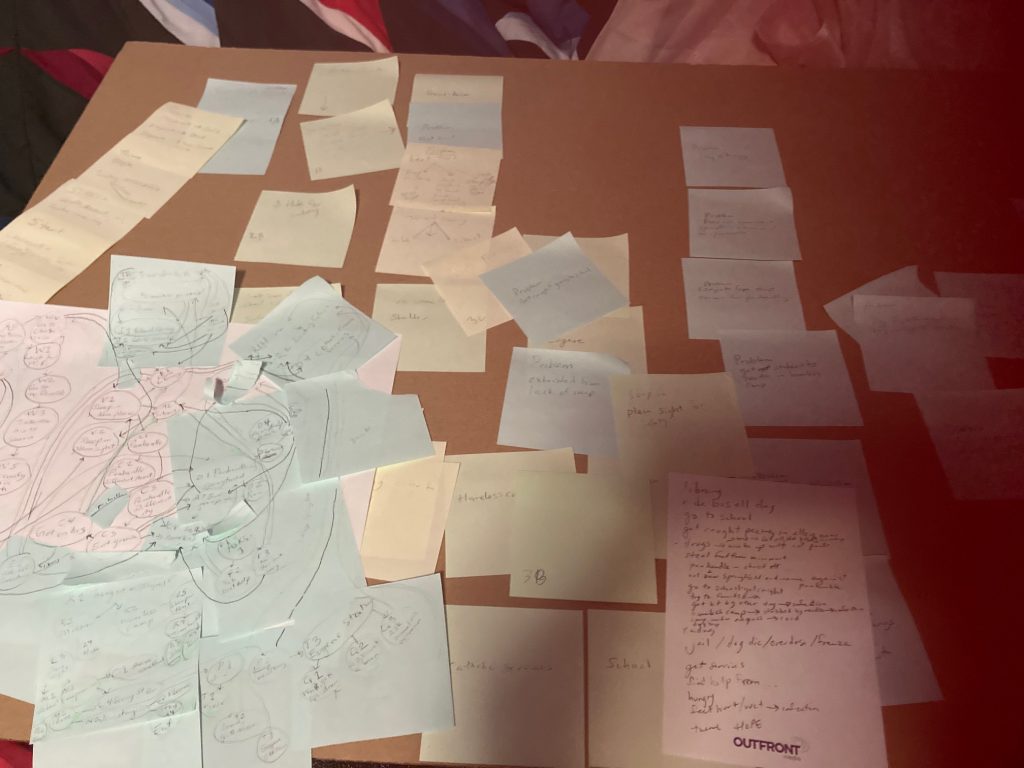This looks like a conspiracy theory board. It is how I plotted a “choose your path” style story. By far, it was the most difficult short story I have ever written. I entered this story in the 15th Night Contest, a story about homeless youth and local services the community offers. This was a blind contest, meaning contestants’ information was removed so the judging would be unbiased.
And I won! The story is going to be made into a game and played in middle schools as part of the curriculum in Eugene.
Preparation for the contest
When I was a kid, I read a couple “Choose Your Own Adventure” books, (which is a proprietary name, so that is not what my story is called.) I wrote a steampunk romance choose your path story years ago, and it was accepted by a publisher and supposed to be made into a book and game, though the publisher decided they no longer had funds to do so with COVID. So I came into this project with some experience in that style of story already. I also do sell short stories and write novels, so I have experience with writing in general.
There were definitely requirements relevant to the project like including local resources, doing research, and reading accounts of former homeless youth. But the most difficult preparation was how much plotting, planning, and drawing of diagrams were involved to keep track of the details and paths. The contest provided a couple resources and examples, but I had already been exposed to this style of story, so it wasn’t completely new for me.
Eric Witchey gave a great presentation, hosted by Wordcrafters. He talked about plotting, story structure, and the elements that were needed to make a compelling story in this format.
How did this make me a better writer?
I had a realization during the Eric Witchey presentation. The thing someone has to understand about Eric’s teachings of story structure is that he is using emotionally-driven fiction. Plot is always going to be needed, but the conflict is heavily influenced by the character’s emotions, decisions, and actions. Eric is an award-winning author because he is able to tap into emotions and make a reader feel. When Eric teaches a writing class and the group creates a character and situation, he walks the students through steps to give that character an emotion that leads to making a decision. That decision causes them to take action.
Thinking of a story in this way, it is easy to see how it related to a “choose your own path” story. These are choice-driven books. Every decision to take an action has to lead the character in a different direction that branches out. (There are exceptions to this when the plot converges back to a common point, usually for the sake of simplicity.)
What is the trick to each scene?
When structuring a choose your own adventure, every scene was a sort of cliffhanger. Every scene ended in a choice. Sometimes the choice was to choose to sleep in plain sight so that if one was accosted, witnesses would see it—which probably would deter attack. But that also meant getting splashed or rained on. The other choice was to sleep somewhere hidden and hope no one would spot the protagonist. Sometimes I gave multiple choices: A) You go to Shari’s and use wi-fi, B) You go to McDonalds, which was closer but might be closed and use wi-fi, or C) You go to a friend’s house and hope you could find it.

The end result?
Writing a story in this structure was great practice. After thinking of a story in this way, it was great to write something else and use this same idea. I gave my characters choices so they could become more active protagonists.
Also, it was exhilarating to find out I had won the contest! So I did it! I successfully used the “choose your path” style plot.